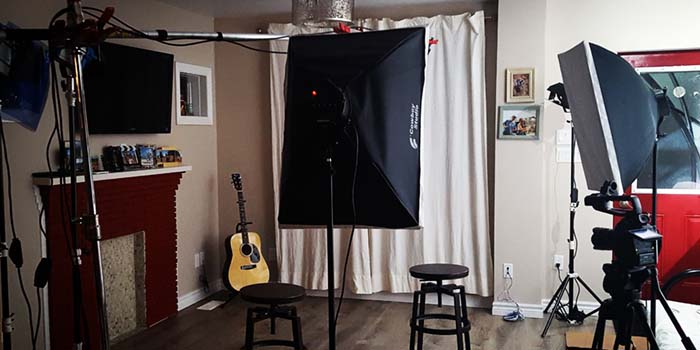
Key lights supplied by Valentina Dang
This blog will show you how we setup an interview with 3 cameras affordably with make shift gear! Recently we have been doing mini series’ for a webisode – Forgotten Corpses. These mini series will “Pick Your Brains” of the creators from the show and at the same time act as a promotional kick before the main webisodes are released publically.
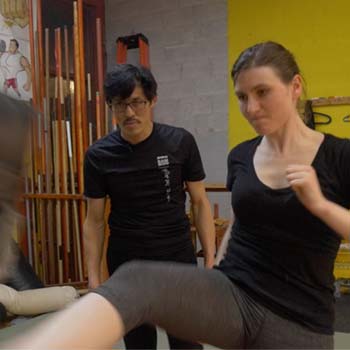
The Background:
In order to increase the chances of success on Youtube (which is where this series will be shown) producers have to consistently upload video content according to Wengie who has almost 6 million subscribers on Youtube. She suggested to release original and interesting content once per week, for a course of over 3 months in order to start seeing traction. By using this model, our plan is to construct approximately 12 – 5 minute interviews and release weekly for a course of 4 months, hence the 12 videos. The idea is that once all the content is filmed and edited, we will then release the “Pick Your Brains” miniseries.
With this strategy in place, all we have to do is come up with content. The material we’ve envision to help launch our project are a series of mini clips discussing about our show. They will cover interviews from the cast, and crew, transmedia games plus survival tips and self defence demos by master Kin Sze at the Bamboo Kung Fu School, just in case of a zombie attack were to happen 😉
To keep the workflow smooth, we decided that it would be best to shoot several videos in 1 day as our clips were about 5 minutes in length. So on our first shoot, we shot 6 short clips which covered half of what we needed to do. By working this way, its more effective since we are doing the same setup for each. I also told everyone to bring 2 different pairs of clothing to give the impression that we recorded over a longer time period.
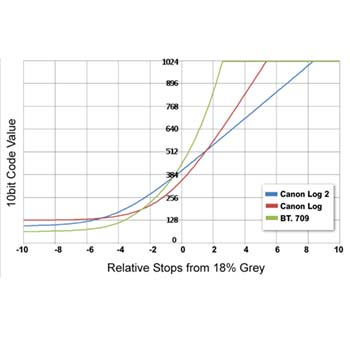
Camera Configuration:
To pull off our interviews, we wanted to cover it with 3 cameras. We had a master shot (wideshot), and 2 close ups to cover each subject (See Fig 2.) The wide shot was on a 2.8F 14mm prime lens where it showed both the interviewer & interviewee sitting on stools filming in Canon Log mode. What is Canon Log? In short, it’s a colour space that gives you more dynamic range in your picture. It means that the image will retain more details in the whites and black areas in comparison to DSLR cameras which films in the rec 709 colour space and will loose that vital information. (See Fig 1.)
A great example of the difference between filming in Log mode and rec 709, is that if a camera was filming an illuminated light bulb in rec 709 colour space, the DSLR won’t see the details of the element inside the bulb as it will be over exposed. However, by filming in Log mode (which is not available on all cameras) this setup is sensitive enough to record the fine details of the element. The downside of Log mode is that it takes time to colour correct the footage in post production as the image turns out greyish looking. However you can apply a LUT (look up table) to speed things up.
With the master shot taken care, we now worked on the 2 close ups cameras. They were placed on both sides of the main camera on Canon zoom lens’. Even though we had matched all the cameras settings, but despite of this it will still need to be adjusted in post production as both of the DSLRs don’t have the Log mode option.
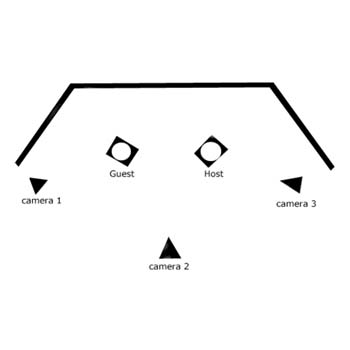
Figure 2 shows the most popular (hottest) setup for most studios. In our case, we did not have a third tripod handy, so we’ve actually used a light stand on one of the cameras. Again, two of our cameras were DSLRs and had a recording limit of approximately 10 minutes. The CMOS sensor on the cameras tend to heat up quickly, so it’s something to take note of while filming in hot conditions because you may get glitches in the clip or the recording will even stop. With the Canon Cinema Camera series, there is a build in fan that will cool the sensor. You can also record onto 2 cards so if one of the cards fails, you will still be able to obtain the information from the other.
One of the reasons why cameras are so expensive it’s because to yield one successful CMOS sensor the ratio is very high according to storm chaser & Sony F5 videographer Alister Chapman. In addition to this, creating components for these cameras such as their lenses requires of a lot of research and study as shown in the video below. However, with all of the above points having considered, you are guaranteed a great interview.
Audio Configuration:
The interviews were all filmed with 2 shot gun microphones as we didn’t have 2 LAVs. I positioned the mics onto one 12 foot long paint pole. I improvised a contraption to mount the pole onto my C stand by attaching 2 c clamps onto the tip of the stand, place the pole sideways and clamped it using alligator clamps. Each microphone was directed towards for each person.
The microphones had phantom power and was attached directly into the C100 where the levels can be adjusted accordingly.
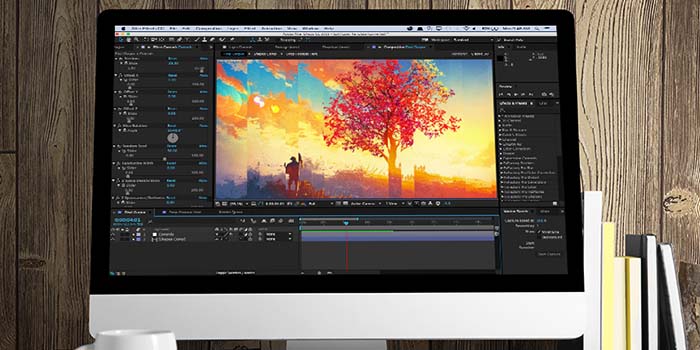
Free easy After Effects templates can add production value to your project
The Editing:
For the editing, I wanted to keep it organic, to give it the feel of a live recording. In order to capture the audience’s attention at the beginning, I’ve searched for a free After Effects template and modified it. There are many free templates out there by simply searching on Youtube and for “AE free templates download” You may have to give your email out in order to download it, but its worth it, because of the time saved. I used Plural Eyes to sync up the audio.
Royalty free music can be found on many sites, check my previous blog (top of post) for the links. With the combination of music coupled with an amazing title animation opening, the clip renders out to a TV webisode. The next steps are to edit all of the clips and schedule the uploads onto Youtube.
That’s a Wrap!
Once all the clips are scheduled to upload once a week on Youtube, all you have to do is promote them onto social media. At least a portion of the process remains automatic. You have to keep pushing and advertising your content to the public in order to gain tracking according to Wengie.
This is our first campaign and we hope that these clips in conjunction with social media will help push the series out when it comes time for the launch. But in the mean time check out our Forgotten Corpses pilot! If you have any production or editing questions feel free to contact us. And as always happy editing!
